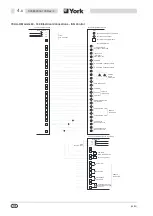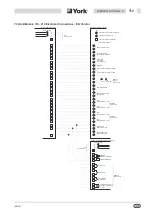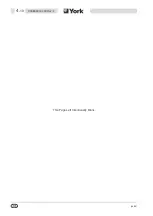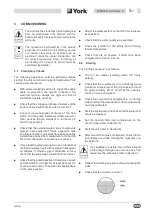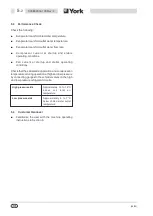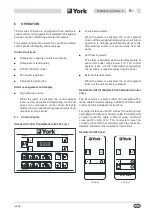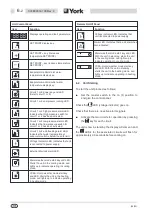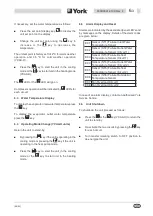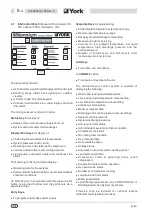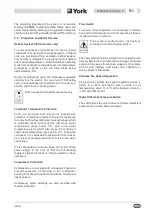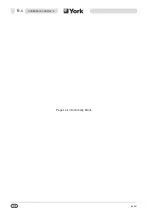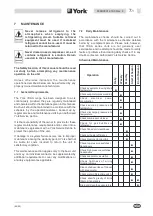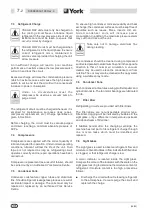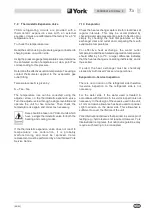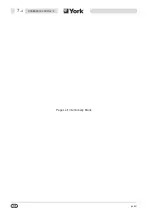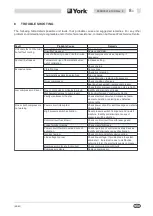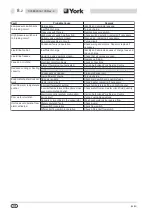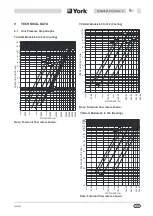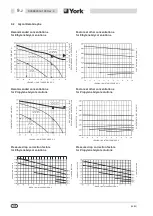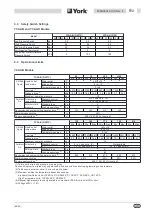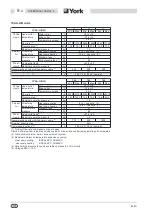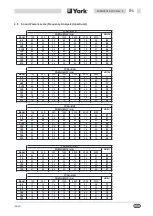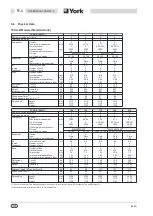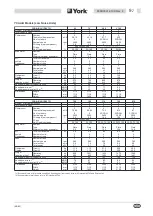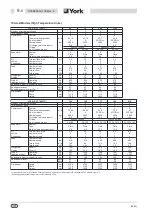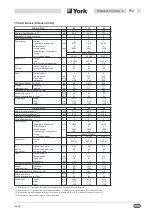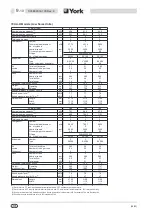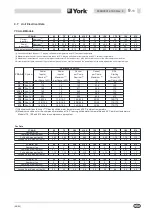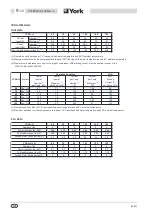
7.9
Thermostatic Expansion Valve
YCAA refrigerating circuits are provided with a
thermostatic expansion valve with an external
equaliser. Valves are calibrated at the factory for a 5 °C
temperature rise.
To check the temperature rise:
Read the suction using a pressure gauge connected to
charging valve on suction side.
Using the pressure gauge temperature scale, determine
the saturated suction temperature at dew point Tsa
corresponding to this pressure.
Determine the effective suction temperature Tse using a
contact thermometer applied to the evaporator gas
outlet fitting.
Temperature rise S is given by:
S = Tse - Tsa
The temperature rise can be corrected using the
adjuster screw on the thermostatic expansion valve.
Turn the adjuster screw through a single revolution and
operate the unit for five minutes. Then check the
temperature rise again and correct as necessary.
Care should be taken on YCAA-H units which
have a single thermostatic valve for both the
heating and cooling modes.
If the thermostatic expansion valve does not react to
temperature rise calibration, it is probably
malfunctioning and must be replaced. Valve
replacement must be performed by an Authorised York
Service Centre.
7.10 Evaporator
Check the heat exchanger water side for cleanliness at
regular intervals. This may be accomplished by
checking water side pressure drop (refer to Section 9) or
simply by checking the fluid temperatures at heat
exchanger inlet and outlet and comparing them with
evaporation temperatures.
For effective heat exchange, the water outlet
temperature and the saturated evaporation temperature
should differ by 5 to 7°C. A larger difference indicates
that the heat exchanger is operating inefficiently, and is
thus soiled.
If soiled, the heat exchanger must be chemically
cleaned by Authorised York service personnel.
Evaporator In-Service Inspection
There is no corrosion on the refrigerant side therefore
in-service inspection on the refrigerant side is not
necessary.
For the water side, if the water used is treated in
accordance with Section 4.5, in-service inspection is not
necessary. In the design of the vessels used in the unit,
a 1 mm corrosion allowance has been used to consider
slight corrosion on the water side. This allowance is
sufficient to cover the lifetime of the unit.
York International believes that periodic in service proof
testing (e.g.; hydro tests) is not required. However, York
International recognises that national regulations may
require such testing to be conducted.
(09/03)
035B09012-100 Rev. 4
7
-
3
Summary of Contents for YCAA B 120
Page 2: ......
Page 16: ...This Page Left Intentionally Blank 09 03 2 6 035B09012 100 Rev 4 ...
Page 28: ...This Page Left Intentionally Blank 09 03 4 10 035B09012 100 Rev 4 ...
Page 36: ...Page Left Intentionally Blank 09 03 6 6 035B09012 100 Rev 4 ...
Page 40: ...Page Left Intentionally Blank 09 03 7 4 035B09012 100 Rev 4 ...
Page 68: ...Notes 09 03 11 2 035B09012 100 Rev 4 ...
Page 69: ...Notes 09 03 035B09012 100 Rev 4 11 3 ...


